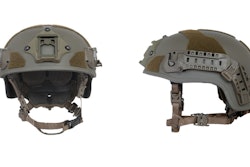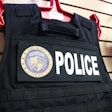As an experienced investigator, a national investigations trainer, and a court certified expert witness I have been directly involved in or analyzed and evaluated scores of use-of-force investigations. Not surprisingly, a dominant mantra I consistently notice investigators repeating is, “What happened?”
That’s a critical question, of course, but if it becomes the core question, we’re putting investigations, officers’ careers and lives – and the facts – at risk. Officers will tell you “what” happened, as they should, simply based on the fact that you asked. But in my experience the more important question is, “Why did this happen?”
One of the most effective tools I have found is to use the Observation, Orientation, Decision & Action sequence (OODA Loop) in reverse, as an analytical tool or system to assist in discovering “why” certain things occurred.
In conducting investigative reviews or analyses, I have learned, that as investigators we tend to miss opportunities to discover and apply valuable information, simply because the information is overlooked. The question then becomes, why do we miss it, and what is actually missing?
Recent Case
In a recent case that I was involved in as an expert, I followed my typical methodology of reviewing all evidence available regarding the case; including statements, transcriptions, video, interviews, and all data related to the initial investigation of the case. During the interview, the homicide investigators asked a very simple set of questions, all related to a core theme: “What happened?” This is all too common in nearly every case I have reviewed. The questions begin during the walk through and continue through the voluntary statements. Everyone wants to know “what happened?”, but who is asking “Why did this happen?”
In this case, the officer (Officer X) stated he arrived on a call that was dispatched as a suicidal subject, intoxicated and threatening to kill himself with an unknown weapon or means. Officer X stated that he parked his vehicle in a tactically sound location and approached the subject from the east. Officer X then stated that other officers (Officers 1 and 2) already on the scene, were yelling commands to “drop it” and to “get on the ground,” while chasing the subject into a confined courtyard in a crowded apartment complex with their duty weapons drawn.
This is what Officer X observed as he exited his vehicle and rounded the corner, X stated that he saw a glint of metal in the subject’s hand. The officer’s statement was that the subject had a knife with a colored handle in one hand and a bottle of liquor in the other. At this point, Officer X said he warned the subject he would be shot and ordered him to “get on the ground” and to “drop it.” The subject remained non-compliant and appeared to aggressively move toward the officers and shots were fired.
It is important to note shots were fired by two officers. This is “what” happened in this critical incident. Investigators on the scene viewed the body-worn camera (BWC) footage briefly and reached conclusions as to “what” happened in this incident. The BWC footage showed very little in the way of usable evidence. Assumptions were quickly made as to what happened based on the extremely limited and distorted video data and statements from the officers about “what” happened.
The overarching conclusion was that Officer X, who arrived third on scene, failed to de-escalate, rushed to judgment, and shot an unarmed man. In the warrant it was stated, “At the conclusion of the investigation it was determined that the subject did not have a weapon and that the use of force was unreasonable, excessive and egregiously out of policy.” Officer X was charged with murder in the second degree, and later convicted.
As I reviewed the investigative data and all the available video footage, I realized dangerous assumptions were being made based on the investigators’ theory of “what” occurred. The unfortunate reality of this theory is that the ensuing investigation was based on their early conclusions. Subsequently, investigators only identified information in the investigation that supported their own beliefs about what happened. They put forth little or no effort to challenge those preliminary beliefs or to simply dig deeper.
This is not an objectively based investigation. This is a “confirmation bias”- based investigation and is dangerous on both edges of the sword. If you think you know “what” happened and have not urgently attempted to challenge your own early expectations of “what” the investigative data will show, the evidence you do gather will be strongly in support of this expectation and other evidence will potentially be overlooked. This is not conceptual. I have seen it on multiple case reviews, and have experienced it myself as an investigator.
This biased process can potentially lead to an officer’s egregious or even malevolent actions, or who has acted with negligence and outside of training and or policy, being improperly justified in poor decisions being made at extreme consequence to the community. Conversely, as in this case; the officer is charged with a crime at the highest degree. This also has extreme consequences, not only for the officer, but for the community, the department and law enforcement across the country.
The Why
The “why” is not as prevalent in the investigative process simply because officers, having their own experience in the profession, give statements assuming that the investigators conducting the interview know why certain actions occurred. The assumption is that the investigator knew what the involved officer knew at the time of the event, what they were thinking, and why the officer did what they did.
Similarly, the investigators make assumptions or have intrinsic expectations as to “why” the officer did what he/she did. These dangerous beliefs are based on the investigators’ own unsupported conclusions and the investigators have not looked objectively at all of the data, taken steps to verify data, or conducted a proper cognitive based interview. In short, the simple question, “why?” was never asked of the officer.
However, the assumptions are certainly made.
- Why did you arrive and park where you did?
- Why did you think the subject had a bottle of liquor in his hands?
- Why did you yell commands at the subject?
- Why did you believe the subject had a knife?
- Why did you move in so quickly?
- Why did you think that the officers and others were in danger?
Just as every notable action is preceded by a decision, every notable action requires an explanation of “why” the decision to act was made. This is the application of the OODA loop in reverse. If we identify the action; we can then work in reverse to begin uncovering the preceding decision, then identify the orientation of the officer within the task environment to learn “why” the decision was being driven forward.
After an in-depth interview, we can then identify what observations were made by the officer. The orientation aspect often gets the least attention in the OODA loop, that is the most important aspect from my perspective as an investigator.
The orientation is what the information being perceived or observed meant to the officer within the context of the encounter. We assume, on both sides, the investigator and the officer involved, that everyone understands what the orientation to the event was. This is a dangerous assumption; as investigators we need statements as to what the information being perceived meant to the officer involved. As the officer involved and from the officer’s perspective, the officer must ensure the investigators understand the perspective and the context and what the information meant in the moment.
As investigators we should never assume that we know why the decision was made. Our goal as investigators must be to understand why the officer’s decisions made sense to them at the time, not why the decisions did not make sense to us after the fact.
Without knowing “why,” we cannot compare any actions of the officer to the “objective standard” related to nationally accepted training and policy benchmarks. As investigators, if we make assumptions, for any reason based on knowing “what” happened, we lose potentially valuable information from the perspective of the involved officers. These statements identify the only component that connects “what” happened to any decision-making process, which is “why” these actions occurred.
This all begins with a properly conducted interview, knowing what evidence is available through an extensive on-scene investigation, knowing that all information is important, knowing what open-ended questions to ask, and considering all of the data, without contaminating the process based on our own beliefs.
Focusing on “why” does not excuse or otherwise justify an officer’s actions. In a scenario where the officer was well-decisioned, using reasonable and required force based on the objective standard, knowing “why” will help support the understanding of “what” happened.
In a scenario where the officer used a level of force that was excessive, unnecessary, or unreasonable, knowing and understanding “why” will clearly identify the pressing issues in “what” happened.
Avoid allowing your immediate assumptions to govern the course of the investigation. No matter how you are affected by the knowledge of “what” happened, keep in mind that an investigation should be rigorous and complete. If facts are overlooked or the primary focus of the investigation is to support your viewpoints, police competency will suffer undue consequences and in certain events police incompetence may remain unchecked.
Bio
Sgt. Jamie Borden, now retired, served with a large police department in Nevada and was tasked with the creation and implementation of the “Use of Force Training and Analysis Unit” for the agency. The unit was created specifically to identify and analyze police performance issues related to police use-of-force and police training. He is court certified as an expert in controversial use of force, police performance dynamics, forensic video examination, officer/subject movement dynamics, controversial officer-involved shootings, and attentional issues related to officer-involved critical incidents, police training and police policy, and procedure and practice. Borden is the owner of Critical Incident Review (CIR), www.criticalincidentreview.com.















